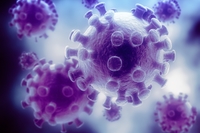In the same section
- Accueil
- EN
- Research
- Research projects
- Fédération Wallonie-Bruxelles
- "Actions de recherche concertées" (ARC)
-
Share this page
Research project "HIV-1 post-integration latency" (ARC program)
Studies of transcriptional mechanisms regulating HIV-1 post-integration latency: implications for innovative therapeutic strategies

Antiretroviral multitherapy increases survival and quality of life of HIV-infected patients. However, interruption of therapy almost invariably leads to the re-emergence of detectable viral replication, since HIV persists in viral latent reservoirs. Indeed, this small population of HIV-1 latently-infected cellular reservoirs is a permanent source for virus reactivation and could be responsible for the rebound of plasma viremia observed after multitherapy interruption. Therapeutic approaches aimed at achieving either a sterilizing cure (elimination of HIV from the human body) or -more likely- a remission (long-term control of HIV in the absence of multitherapy) have been proposed. In this context, activation of HIV expression from latent reservoirs together with an efficient multitherapy is a part of proposed strategies that may potentially lead to a decrease in the size of the reservoirs.
This proposed approach has led to the search for small molecule named latency reversing agents (LRAs). Results from previous ex vivo reactivation assays have however highlighted patient-specific qualitative and quantitative variations in the capacity of the HIV-1-infected patient cells to be reactivated in response to different types of LRAs. This enlightens the complex regulation of HIV-1 gene expression.
The groups of Carine Van Lint and Stéphane De Wit (Faculty of Sciences and Faculty of Medicine, respectively) will pursue their long-standing and active collaboration on HIV-1 transcriptional latency. This complex phenomenon involves protein and transcriptional regulations, as well as epigenetic modifications and changes in chromatin organization. Further understanding of the molecular mechanisms involved in HIV-1 latency is critical to identify new therapeutic targets.
Spokesperson
Carine Van Lint
Molecular Virology Service
Faculty of Sciences
